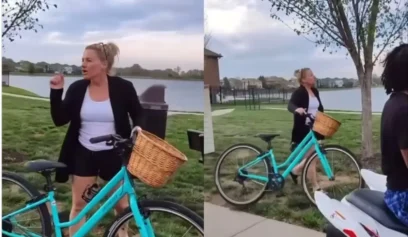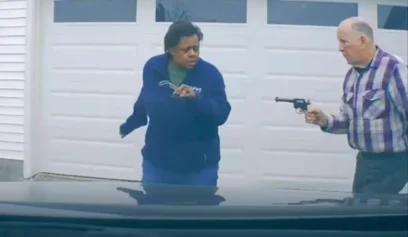The rate of homeownership for Black families was nearly 30 percent below that of whites in 2019, according to a recently released study that examined purchasing trends in the housing sector.
The National Association of Realtors released their “Snapshot of Race & Home Buying in America” report on Feb. 17.
The study focused on homeownership rates for Asian, Black, Hispanic and white households using survey data that detailed changes in the market from 2009 to 2019.
Blacks were the demographic with the lowest rate of 42 percent, more than 20 percent below the national average of 64.2 percent. Just over 60 percent of Asians owned homes and about 48 percent of Hispanic families, the report indicated. Meanwhile, the homeownership rate for white Americans hovered just shy of 70 percent.
“Homeownership is absolutely the No. 1 way that Americans build and acquire wealth,” said Jessica Lautz, NAR’s vice president of demographics and behavioral insights. “We are traditionally, in the U.S., bad savers, and we don’t put money into our savings accounts as we perhaps should. So our nest egg often resides in our homes.”
Black homeownership was at 44.5 percent when the study began in 2009. The rate fell 2.5 points over the ensuing decade. Overall, homeownership for all demographics fell from 66 to 64.2 percent during that span.
In addition to breaking down ownership, NAR analyzed the characteristics of home buyers, gauging what motivated their purchases. The realty group also took a look at buyers’ financial backgrounds based on race.
Black households were twice as likely to have student loan debt that hindered them from qualifying for home loans. They also owed more on those college loans. Black families carried about $40,000 in college loan debt on average, versus about $30,000 for white households.
Lautz, who was part of NAR’s research team, said there was an across-the-board housing shortage that lasted about a decade in the wake of the Great Recession. It hit Black home buyers particularly hard. Lautz explained that people aren’t moving as often as they once did, staying in the same house for a record high of 10 years on average. She said there are more people in the market for a second home, eating into the already short supply of homes that first-time buyers can choose from. But she says the biggest hurdle over the decade was under-production.
“We really do need more home-building to be able to have enough inventory for the population who wants to move,” Lautz told Atlanta Black Star.
Experts say builders have cited land costs, labor shortages and rising price of materials like steel and lumber for the reduction in residential development. Lautz said builders were also just more hesitant to build after the financial meltdown.
“Housing affordability has been something that absolutely is at a crisis level,” she said. “We have seen inventory at all time historical lows, with 1.9 months of inventory, where a balanced market would be 6.5 months. And we know we’re not [there]. It just means increased bidding wars, and it means more competition from buyers.”
The gap in homeownership is an issue that has persisted for decades. A 2017 study by the Urban Institute, a nonprofit research think tank, showed that the Black homeownership rate in 1960 was 38 percent, representing a 27-point gap when compared with white homeowners. Nearly sixty years later, the gap had widened to 30 points, the Urban Institute reported.
“Part of this certainly is economic. But I would argue that it also reflects a level of systemic racism that remains,” said Michael Neal, a senior research adviser at the Urban Institute. “The impact that it has had both directly, in terms of things like redlining, but also indirectly in terms of things like last in first out as a guiding principle for persons of color in the job market.
“Unfortunately, while public policy has been put in place, we have not seen a closing of the homeownership rate gap,” Neal also told Atlanta Black Star. “In fact, the gap has actually widened between white and Black and white and Hispanic homeowners over the last six years or so.”

NAR’s snapshot report detailed several factors that continue to play into the Black community’s struggles to buy homes. Black households tend to have higher debt, lower income and more problematic credit ratings, the study indicated.
Meanwhile, Black prospective buyers are 2.5 times more likely to be rejected for mortgage loans than whites in the market. More than 40 percent of African-Americans felt they faced stricter requirements because of their race. And nearly a third of Black buyers told NAR they either saw discrimination during the loan process or experienced it themselves.
Nationwide, white buyers accounted for 81% of the housing purchases in 2019, according to data from the American Community Survey. Black people were only on the purchasing end of 7 percent of home sales that year.
The NAR study showed that the net worth for Black households was $24,000 compared to $188,000 for white families. Lautz said homesownership accounted for a large part of that wealth gap.
In fact, 72 percent of the white respondents in the study had previously owned a home, and nearly 40 percent used proceeds from a home sale for their down payment. That was a luxury that only 17 percent of Black home buyers could rely on. About half of Black, Hispanic and Asians surveyed in the study were purchasing their first home.
NAR and the Urban Institute worked together in 2017 to develop a five-point plan to close the gap in homeownership. They proposed policy initiatives like increasing the nation’s single-family housing stock to make homes more affordable. The plan also called for a more accessible financing system for home buying. NAR now touts President Joe Biden’s proposed first-time home buyer’s tax credit, which could provide buyers with up to $15,000 for closing costs.
“When we look at data from successful homebuyers, we’re missing all of the homebuyers who stopped at some part in the transaction, experienced discrimination and decided I’m never going to be a homeowner,” Lautz said. “There are a lot of opportunities where we can fix the process of what can be addressed to narrow that homeownership gap.”
Neal stressed that a family’s primary residence generally represents their largest asset, particularly for most middle-class households. It can serve to boost household wealth as buyers acquire more equity from paying off the mortgage debt over the years. Neal said homeownership also insulates families against inflation.
Urban Institute research suggests minorities cycle in and out of homeownership, a finding that seems to suggest more financial volatility than experienced by white households. Neal advised those interested in purchasing a home to seek home buyers counseling to prepare themselves financially for rainy day repairs to maintain ownership.
“Is there access to capital that can help you if there’s a hole in the roof or if the refrigerator breaks down or a jump in property taxes,” Neal said. “Any of these kinds of sticker shocks can often undermine home ownership for people of color.”


